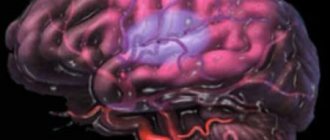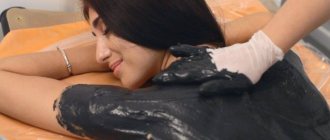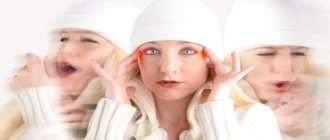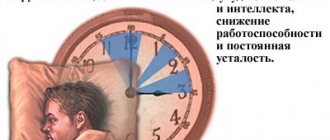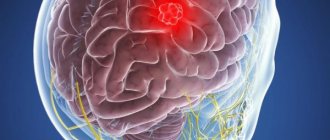The swallowing reflex is very similar to the act of breathing in that a person performs them unconsciously. These unconditioned reactions of the body do not need to be specially learned. They are available to every living being from birth, because without them it would be impossible to ensure survival. However, sometimes swallowing may be impaired. Why this violation of the reflex act occurs and how to get rid of the problem, we will consider further.
Concept
Dysphagia is difficulty or complete exclusion of food passing through the esophagus. Impaired swallowing leads to discomfort and pain in the throat. In this case, the coordination of the muscles of the food tract changes, and the food bolus is not able to move freely through the throat.
A violation of the swallowing reflex occurs when swallowing a very large piece of food. This also occurs when peristalsis is disrupted. This leads to complications in respiratory function, weight loss, and exhaustion of the body, so urgent consultation with a doctor is necessary.
How to restore the pharyngeal reflex
Most often, a violation of the swallowing reflex does not act as an independent disease, but as a symptom indicating a more serious problem. In this regard, treatment should be carried out in combination with the underlying disease.
If the problem is disorders of the gastrointestinal tract, then drug treatment is usually prescribed. It consists of taking substances that reduce the acidity of gastric juice, as well as antacids. In addition, patients need strict adherence to the diet.
Sometimes swallowing disorders can be caused not only by diseases, but also by psychological disorders. Treatment in this case is carried out not only with strict adherence to diet and posture when eating, but also with psychotherapy.
Dysphagia appears no less often in patients after a stroke. It takes at least 2-3 weeks for patients to restore lost swallowing function. Until the reflex recovers, the patient is transferred to nutrition using a nasogastric tube. However, the treatment does not end there, since the patient still has to regularly perform special exercises to stimulate the restoration of the lost swallowing function.
In this regard, let us consider in more detail what exercises are used to base the treatment of the swallowing reflex:
- First of all, the patient begins by simulating a swallow. Such attempts should be repeated at least 10 times a day;
- Next, an exercise is performed during which the patient yawns. It also needs to be repeated at least 10 times;
- If the previous exercises are successfully completed, the tasks become a little more complicated and now the person is asked to try gargling;
- Imitating snoring or coughing is also suitable for training;
- In order to train the muscles of the soft palate, the patient is asked to touch it with the tip of the tongue. This procedure is performed first with the mouth open and then with it closed.
It is recommended that the patient perform such exercises only under the supervision of a qualified specialist. It is strictly forbidden to force a patient to do something that he cannot do the first time. Performing all exercises requires regularity. In addition, you cannot rush a person who has suffered a stroke, because the swallowing reflex takes time to recover. If the patient does not neglect exercise after a stroke, then all impaired functions are easily restored.
Rate this article:
(votes: 2 , average: 5.00 out of 5)
Loading...
Related posts:
- Basic examples, signs and features of the classification of unconditioned reflexes
- Conditioned reflex: mechanisms of formation and classification of acquired reactions
- The main features of the manifestation of obligatory reflexes in newborns
- The main features of the manifestation of the Moro reflex in newborns
- What is included in the classification of reflexes?
- What are the consequences of a violation of the knee reflex of vital functions?
Causes
If the violation of the swallowing reflex is one-time, then it probably occurred from a mechanical reason. The piece may be very large or may not correspond to the size of the lumen of the esophagus.
If problems constantly recur, one should suspect the functional factors of their occurrence, which are associated with impaired peristalsis. A violation of the swallowing reflex occurs due to:
- damage to the glossopharyngeal nerve;
- tongue paralysis;
- damage to the muscles of the esophagus and pharynx after a stroke;
- damage to the smooth muscles of the esophagus due to myopathy, neuropathy, alcoholism and other ailments.
Less commonly, this problem appears with narrowing and disorder of the esophagus:
- swelling due to stomatitis or sore throat;
- pharyngeal or alimentary stenosis;
- scarring after burns, operations, trauma to the esophagus;
- tumor growth in esophageal cancer;
- damage to the walls of the esophagus.
In isolated cases, when the disorder occurs, Parkinson's disease, cerebral palsy, systemic scleroderma, chronic pneumonia and other ailments appear. These are all causes of impaired swallowing reflex.
Treatment of the consequences of birth injuries, encephalopathy, cerebral palsy in Saratov, Russia
Sarclinic provides treatment for the consequences of birth injuries, treatment of perinatal encephalopathy, treatment of cerebral palsy during the recovery period in Saratov, Russia.
Sarklinik wishes you fortitude, courage and patience.
Sign up for a consultation. There are contraindications. Consultation with a specialist is required.
Text: ® SARCLINIC | Sarclinic.com \ Sarсlinic.ru Photo: © phakimata / Photobank Photogenica / photogenica.ru The people depicted in the photo are models, do not suffer from the diseases described and/or all coincidences are excluded.
Related posts:
Why does the clitoris itch and hurt, swollen, itchy, itchy, swollen?
VMR, weak muscle tone, treatment in Saratov, Russia
Low sensitivity of the glans and frenulum of the penis, treatment in Russia, Saratov
How to determine early pregnancy, am I pregnant, hCG
Tourette's, loud screams, jerking, tonic-clonic seizures, vocalisms, tics
Comments ()
Localization
There are several types of swallowing dysfunction, it all depends on the part of the digestive tract where the problem is located, as well as on its severity.
According to localization, the pathology is:
- Oropharyngeal or oropharyngeal, when the food bolus has difficulty moving from the pharynx to the esophagus.
- Esophageal or esophageal. In this case, the lumen of the digestive tract is blocked or problems appear in the functioning of its muscles.
- Cricopharyngeal incoordination. In this case, there is a failure in relaxation of the cricopharyngeal muscle. Esophageal diverticulum and chronic lung pathology may also develop.
Swallowing disorders
Main article: Dysphagia
Swallowing disorders can be of various natures. In particular, swallowing disorders can occur with sore throat, pharyngitis, stomatitis, tumors of the tissues of the oral cavity, larynx, as well as when eating hot food, a small amount of saliva, and hysteria. The following symptoms are distinguished:
- dysphagia - a feeling of a bolus of food getting stuck as it passes through the pharynx or esophagus;
- odynophagia - pain when swallowing;
- oropharyngeal dysphagia - disturbances in the voluntary (when the swallowing process is controlled by consciousness) phase of swallowing;
- aphagia - complete obstruction of the esophagus;
- hysterical lump - there are no swallowing problems, but there is a constant feeling of a lump in the throat; esophageal manometry and X-ray contrast study reveal nothing;
- phagophobia - fear of swallowing.[4]
- aerophagia - swallowing air, including with a bolus of food.
Diagnosis of swallowing disorders
Degrees of illness
According to severity, swallowing disorder is divided into 4 degrees:
- The patient has difficulty swallowing. This function is not available with some solid foods.
- It is difficult to swallow any solid food, but semi-liquid and soft foods pass easily.
- A person can only eat liquid food.
- Swallowing is impossible completely; no food, even liquid, can pass through the pharynx.
Notes
- Tarkhanov I.R.
Swallowing // Encyclopedic Dictionary of Brockhaus and Efron: in 86 volumes (82 volumes and 4 additional). - St. Petersburg, 1890-1907. - Henderson.
J.M. Pathophysiology of the digestive organs. - M.: Binom, St. Petersburg: Nevsky Dialect, 1997. - Stendal Ch.
Practical Guide to Gastrointestinal Function Testing. Blackwell Science Ltd., 1997, 280 p. ISBN 0-632-04918-9. (English). - Internal medicine according to Tinsley R. Harrison. Book 5. M.: Praktika, 2005, 2384 pp., ISBN 5-89816-045-0, 0-07-020291-5, 5-89816-048-5.
- Meltzer A.
Samuel James Meltzer, MD March 22, 1851 - November 7, 1920. Proceedings of the Society for Experimental Biology and Medicine 223:114-117 (2000). (English)
Symptoms
The swallowing reflex is often impaired after a stroke. Whatever the cause of this phenomenon, a person experiences the following symptoms:
- Unable to swallow solid food. In severe cases - liquid, saliva.
- Reflux occurs and stomach contents flow back into the esophagus and throat.
- There is a feeling of a lump in the throat due to the fact that the sour contents penetrate the throat and burn the mucous membrane.
- When swallowing, there is a feeling of lack of air.
- After eating there is a feeling as if it is stuck in the throat.
- There is a sore throat and shortness of breath.
Treatment methods for swallowing reflex disorders
Swallowing is a complex process that involves the muscles of the pharynx, as well as the muscular layer of the wall of the esophagus. This process is regulated by the nervous system, so any damage to the central nervous system, peripheral nervous system, swallowing muscles or esophagus can lead to swallowing disorders. Swallowing impairment—dysphagia—means difficulty in moving food or liquid from the mouth through the esophagus into the stomach. Common causes of swallowing disorders include strokes, tumors of the esophagus, pharynx, scar lesions of the pharynx, trauma to the pharynx and esophagus, as well as neurodegenerative diseases.
Symptoms of a swallowing disorder may include
- pain when trying to swallow
- inability to swallow food or liquid
- feeling like food is stuck in the throat or chest
- salivation
- hoarse voice
- vomiting swallowed
- frequent heartburn
- weight loss with long-term swallowing disorders
- coughing or choking when trying to swallow
- needing to take food in small pieces in order to swallow it
Causes of swallowing disorders
Because swallowing is a complex process, it is affected by various conditions.
Swallowing disorders associated with the esophagus:
- achalasia
- diffuse spasm
- esophageal strictures
- esophageal tumors
- foreign bodies
- gastroesophageal reflux disease
- eosinophilic esophagitis
- scleroderma
- previous radiation therapy
Swallowing disorders associated with the oropharynx
Some conditions can cause weakness in the muscles of the throat, making it difficult for food to pass from the mouth to the throat. This may cause choking, choking or coughing. In such conditions, there is a high risk of aspiration of food into the respiratory tract. Among the causes of such swallowing disorders:
- neurological diseases - multiple sclerosis, muscular dystrophy and Parkinson's disease.
- Damage to the nervous system, for example due to stroke or brain injury
- pharyngoesophageal diverticulum (Zenker's diverticulum)
- cancerous tumors of the oropharynx, as well as previous radiation therapy for such tumors
Complications of swallowing disorders
Swallowing problems can lead to the following complications:
- Eating disorders (malnutrition), weight loss and dehydration
- Aspiration pneumonia
- Strangulation
Diagnosis of swallowing disorders may include various instrumental studies:
- Contrast radiography with barium suspension.
- Dynamic assessment of the swallowing process (fluoroscopy with contrast).
- Endoscopic examinations, including endoscopic swallowing examination
- Estimation of pressure in the esophagus - manometry
- Imaging methods such as CT or MRI
Treatment for swallowing problems depends on the cause. In this case, both conservative and surgical methods can be used.
Bougienage of the esophagus - used for narrowing of the esophagus, for example, achalasia cardia or strictures. For this, special bougies are used.
Surgery may also be indicated for conditions such as esophageal tumors, achalasia cardia, or pharyngoesophageal diverticulum. Such interventions can also be performed laparoscopically. In particular, for achalasia, laparoscopic myotomy can be performed, when the muscular layer of the esophageal wall is dissected. Palliative methods for eliminating swallowing disorders can include stents - cylindrical wire structures that serve as a frame for a narrowed section of the esophagus. In other cases, for narrowing of the esophagus that cannot be eliminated using minimally invasive methods, surgical treatment is used - resection of the esophagus.
In case of swallowing disorders associated with neurogenic causes, appropriate treatment or rehabilitation measures are also carried out.
Currently, foreign clinics use modern and innovative methods for treating swallowing disorders, including minimally invasive and endoscopic methods. Clinics in Western Europe, Israel, the USA, India, Turkey, and South Korea have excellent equipment that allows such treatment methods to be carried out in accordance with international standards, and the high professionalism and extensive experience of foreign doctors allows such interventions to be carried out with minimal risk of complications.
Diagnostics
There is a violation of the swallowing reflex in elderly and young people. To make a diagnosis and identify the cause, the doctor records complaints and also suggests taking tests with swallowing solid food and water.
To fully assess the patient’s condition after the tests, the doctor prescribes additional hardware examinations, for example, an X-ray of the esophagus with contrast. Ultrasound examination of the thyroid gland and magnetic resonance imaging are also allowed. Sometimes blood tests for tumor markers and other laboratory tests are prescribed.
In children
A violation of the swallowing reflex also occurs in newborns. In this case, the help of a pediatrician is needed. Dysphagia in children usually appears due to disorders in the nervous system. This fact is associated with the immaturity of this system or congenital and acquired ailments. Often this pathology appears in children with cerebral palsy.
An increased risk of pathology in children occurs when:
- athetosis;
- congenital anomalies in the pharynx and esophagus;
- Rossolimo-Bechterew syndrome and Arnold-Chiari malformation.
Parents can identify the course of the disease by the following symptoms:
- The child eats in small portions.
- The baby sucks on the breast or pacifier for a long time.
- Cough and facial flushing occurs after washing or eating.
- Coughing and difficulty breathing do not appear if feeding is done in small portions.
- The baby puts his head in an unusual position before feeding.
- Milk or formula flows into the nose.
Such symptoms appear with frequent bronchitis and pneumonia, as well as bronchial asthma.
What is the swallowing reflex?
Various muscles take part in the act of swallowing: the mouth, tongue, pharynx and esophagus. Their actions are clearly coordinated, so food or liquid that a person consumes can only enter the stomach.
In addition, the swallowing reflex is regulated by the central nervous system. Thanks to this, a person can swallow when he considers it necessary, that is, he can do this action voluntarily. Several so-called cranial nerves take part in the regulation. In addition, the brain has a special swallowing center.
Let's consider what happens during the act of swallowing in order to understand why the swallowing reflex may be impaired:
- At the first stage, food enters the oral cavity, where it softens. This process takes no more than 10 seconds;
- Next, the glossopharyngeal nerve is activated, which innervates the root of the tongue. Food is pushed towards the back of the throat. It is at this stage that a violation most often occurs, which leads to a violation of the swallowing reflex;
- At the moment when the larynx is pulled up, the cricoid cartilage moves back, which closes the entrance to the trachea. After this, the muscles of the pharynx contract, and the lump passes into the esophagus without entering the trachea.
Therapy
Treatment of swallowing reflex disorders should be comprehensive. Therapy is prescribed to relieve local symptoms and eliminate the underlying disease. To improve the condition of inflammation of the esophagus, the patient is prescribed a course of treatment with Zantac, Phosphalugel and other antacids. When food particles enter the nasopharynx, the doctor provides immediate assistance and clears the airways.
Further treatment depends on the underlying disease causing dysphagia. For example, for sore throat, antibiotics are prescribed. If the walls of the esophagus are affected by benign and malignant neoplasms, their surgical removal and chemotherapy are required.
The doctor also corrects eating behavior. It is advisable to eat often and in small portions. Hard and dry foods and foods that can damage the esophagus are removed from the diet.
Surgical treatment
If medications are not effective, surgical treatment is used. Plastic fundoplication is performed to eliminate acid reflux. Tumors, cysts, and polyps that interfere with the passage of food are removed. The expansion of the lumen of the esophagus with air balloons and the bougienage method is used.
Myotomy of the esophagus is performed through punctures of the abdominal wall - laparoscopy or by penetration into the chest - topacotomy. The surgeon excises the sclerotic area, eliminates adhesions or adhesions, lengthens and widens the lumen of the esophageal tube.
In difficult cases, a gastrostomy tube is installed. A thin tube is inserted through the anterior abdominal wall. There is a cap at the tip of the tube, which is opened to introduce food with a special probe. Often, gastrostomy is the only method of salvation from starvation.
Home therapy
It should only be carried out under the supervision of a doctor. The action of the medications is aimed at eliminating inflammation, muscle spasms, and calming the nervous system:
- "Atropine" - helps relax the muscles of the esophagus, eliminates spasm and pain.
- Buscopan is a rectal suppository used to relieve spasms of smooth muscles and reduce the secretion of digestive enzymes.
- "Gastrocepin". The drug temporarily blocks the vagus nerve and eliminates excess secretion of hydrochloric acid.
- "Motilium". The drug stimulates gastric motility, which accelerates the passage of food through the gastrointestinal tract.
- "Platifillin." It calms the nervous system and eliminates vascular hypertonicity.
- "Nikoshpan." Has a relaxing effect on cerebral vessels, improves blood circulation in the brain.
The drugs have contraindications and side effects. Therefore, they should be treated only after consultation with a doctor.
Folk remedies
Treatment with folk remedies is allowed only for mild pathology, which is caused by nervous tension, inflammation of the throat or esophagus, hyperacid gastritis.
To relax muscles and calm nerves, a collection of sweet clover, oregano, nettle, kelp, hops, and mint is used. Dry herbs take 1 tsp. and mix. The mixture (1 tablespoon) is brewed with boiling water (300 ml) in a thermos. After 30 minutes, filtering is performed, the product is taken 100 ml of warm broth 3 times a day.
A collection based on rose hips, calendula and chamomile flowers, mint, licorice, sage, and rue has a general strengthening and anti-inflammatory effect. Plant components must be mixed in equal quantities. The collection (2 tablespoons) is brewed with boiling water (1 liter) in a thermos and left for an hour. You should take ½ cup of the decoction 40 minutes after meals.
To reduce blood pressure and normalize the functioning of the stomach, a collection of motherwort herbs, hawthorn flowers, mint leaves, and calamus root is used. 1 tsp. each dry raw material is mixed in a glass jar. You will need 1 tbsp. l. mixture, which is brewed with boiling water (500 ml). In the morning, 20 minutes before breakfast, drink 150 ml of decoction, and then repeat before lunch and dinner.
Treatment of peptic ulcer disease is carried out using in complex therapy a medicinal collection from identical parts of fennel fruits, chamomile flowers, licorice and marshmallow roots, wheatgrass rhizomes, and yarrow herb. The mixture (1 tbsp) is poured with boiling water (200 ml). Infusion is carried out for half an hour, and then you need to take ½ glass 3 times a day.
Treatment with herbal remedies should be carried out for 10 days, and then a break of 2 weeks is required. If desired, herbal medicine can be resumed by changing the composition of the medicinal collection. If nausea, headache, skin rashes, stool disorders and other symptoms appear during treatment, then therapy is canceled.
Consequences
When it is difficult to swallow food for a long time, you need to consult a doctor. In the absence of timely treatment of the cause, complications arise. They appear as:
- Esophagitis is inflammation in the esophagus, which causes constant pain.
- Esophageal cancer with constant irritation and damage to the mucous membranes.
- Aspiration pneumonia associated with the penetration of food particles, mucus, and vomit into the lungs.
- Lung abscesses, which are caused by food penetration and appear as a complication of pneumonia.
- Pneumosclerosis is a pathological proliferation of connective tissue in the pulmonary area. This is due to long-term inflammation.
How to remove the gag reflex?
Since the main reason for the gag reflex is to prevent a person from choking, it is not recommended to try to stop it.
It is possible that some people do not have a gag reflex, but rather have a high threshold of sensitivity to physical trigger points that is strong enough to induce vomiting. Instead of trying to stop the body's natural reaction, a person with a sensitive gag reflex can use techniques that reduce the sensitivity or stop it when needed. Some of these methods include:
Acupuncture
A 2015 study suggests that acupuncture can relieve a sensitive gag reflex in the short term.
Acupressure
Acupressure involves applying pressure to specific parts of the body to encourage it to heal and regulate itself. Pressure on the palm can change a person's trigger point. Evidence suggests that if a person covers their left thumb with their left hand and applies gentle pressure, it can stop gagging.
Toothbrush
A person can desensitize their gag reflex by training the trigger point in their mouth to be touched. One technique a person can try is to take a toothbrush and slowly move it towards the back of the tongue until they feel like they are going to throw up. He can then brush the area for 15 to 30 seconds.
You can do this process twice a day until you no longer feel the urge to gag from brushing the area.
Local anesthesia
A sensitive gag reflex can make the dentist's job difficult. A 2021 study in which people took impressions of their teeth notes that applying a local anesthetic to the impression material can reduce a person's gag reflex.
Distraction Techniques
A 2021 study examining the gag reflex in children suggests that distracting them with play can reduce the gag reflex.
Relaxation
A person can use relaxation techniques to reduce the risk of vomiting. For example, you can try meditative behaviors such as controlled breathing and mindful thinking.
Prevention
To reduce the risk of dysphagia, you must follow simple recommendations:
- You should stop smoking.
- A balanced diet is required, and if possible, rough foods should be avoided.
- It is necessary to promptly treat ailments of the esophagus, throat, and ENT organs.
- It is important to have regular check-ups with your doctors.
To prevent problems in your child, it is important to monitor what toys he plays with. They should not contain small parts that could be easily swallowed.
Therefore, dysphagia must be treated promptly. Only effective therapy will relieve unpleasant symptoms. And preventive measures will prevent this pathology.
